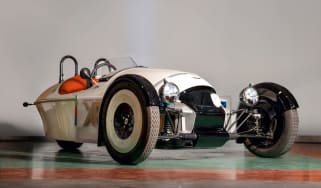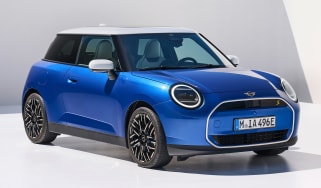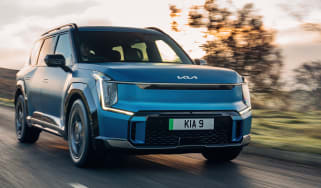What is regenerative braking?
Check out our guide to regen braking – sometimes known as 'B mode'. We explain what it is, how it works and why you needn’t be afraid of it
Brake regeneration is one of those things that sounds complicated, but isn’t. Also known as brake recuperation or 'B mode', this system is fitted to almost every electric and hybrid car on the market these days. It's designed to harvest the excess energy produced when you brake or coast, and feed it back into the car's battery.
How does regenerative braking work?
It’s pretty simple. When the electric motor is driving the car forwards, it’s putting energy into turning the car’s wheels. But when you lift off the accelerator or brake in a car with regenerative braking, the process is reversed and the car’s wheels actually turn the electric motor. Effectively, the electric motor becomes a generator that's powered by the car’s own momentum.
However, for the electric motor to harvest that energy, it must apply force, which it does by running in reverse. This is why, when you lift off the throttle in a car with regenerative braking, you feel it brake without you hitting the brake pedal.
What are regen braking modes, or B modes?
This is also why the technology often has more than one brake regen mode – or B mode – since it’s very easy for manufacturers to program the electric motor to offer different ‘levels’ of pressure. This means you can choose very heavy braking to maximise energy gain, or even turn it off altogether if you don’t like the sensation of the car braking itself.
On top of this, many electric cars now use radar technology to add an ‘automatic’ mode to their brake regen systems, where the car will vary the recuperation force itself in order to keep a safe distance from the vehicle in front. 'One-pedal' systems, such as the e-Pedal driving mode on the Nissan Leaf, are further developments of brake recuperation. They simply dial up the brake force to the point where you needn’t use the ‘normal’ brake pedal at all when driving at slower speeds.
Do electric cars have normal brakes too?
It's worth clarifying that all electric cars also have standard mechanical friction brakes, but if you want to maximise your car’s range and also save wear on the brake pads, then it pays to use the regen system as much as possible. In fact, many electric cars won’t apply force from the standard friction brakes until you hit the brake pedal quite hard, choosing instead to use the recuperation system for lighter braking in order to maximise the range.
Most electric-car drivers find this feels very natural after a while, just like engine braking in a petrol or diesel car feels completely normal. The only difficulty here is that the pedal can then have a noticeable change in response as it switches from regen to normal mechanical braking, so you’ll want to get used to the feel of the brakes and how they respond if you’re driving a battery car for the first time.
Most Popular

Morgan Super3 XP-1 is an electric three-wheeler

MINI Cooper Electric: pricing and specs for British-built electric supermini
